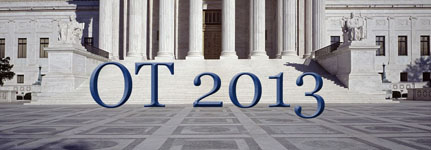US Supreme Court Review: Statutory Interpretation in Criminal Cases
 (This is another post in our series, Looking Back at the U.S. Supreme Court’s 2013 Term.)
(This is another post in our series, Looking Back at the U.S. Supreme Court’s 2013 Term.)
In the first post in this series, I discussed two causation cases in some detail. In this post, I will more briefly summarize the full set of the Court’s criminal statutory interpretation cases from the past term and then offer a few overarching observations.
Here are the cases (excluding habeas corpus decisions):

